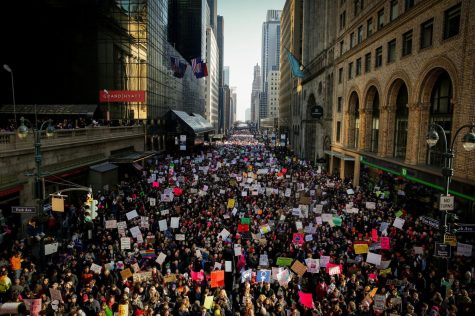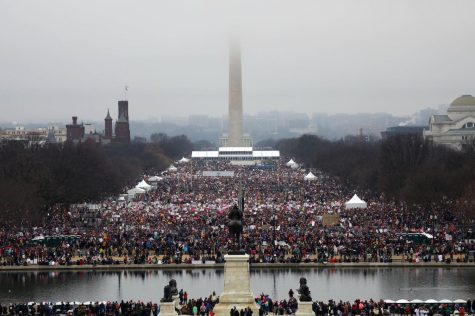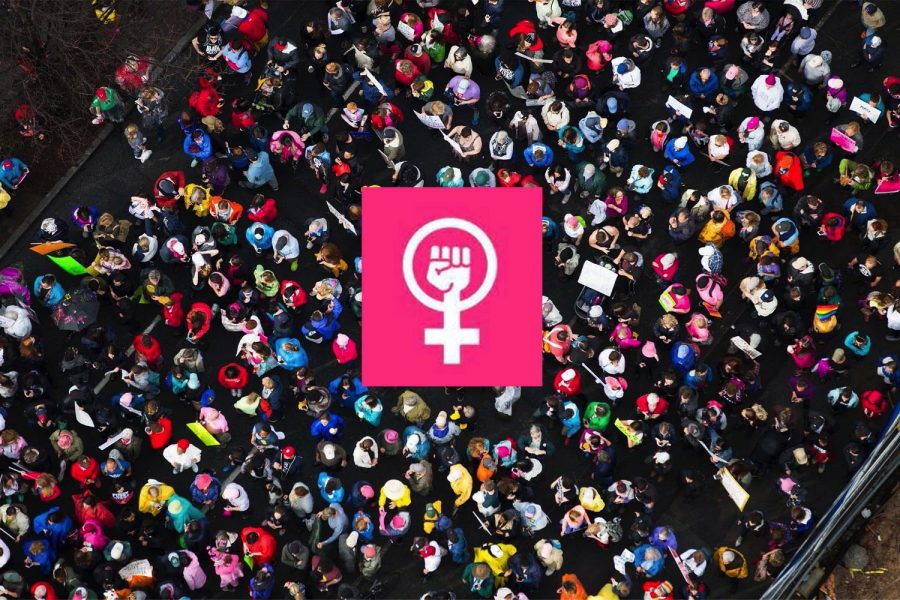The fifth anniversary of the Women’s March prompts action against injustice
Despite a decline in active participants, the feminist movement continues to push forward.
The centuries-old women’s rights and liberation movement has adapted to cultural changes to incorporate diverse perspectives. New waves of feminism eventually led to the creation of the inaugural Women’s March in January 2017. The annual march experienced a decline in participants due to the coronavirus pandemic, according to The New York Times. Members of the Sacred Heart Greenwich community have continued to express their support for the feminist movement and their interest in attending future marches.
Female legal and voting rights were at the forefront of the first wave of feminism in the nineteenth and early twentieth centuries. The second wave of feminism lasted from the 1960s to the 1980s and pertained to the experience of American women beyond their legal rights. The second wave emphasized gender inequality in politics, work, and within family units, according to britannica.com.

In the 1990s, Generation X led the third wave of feminism that marked a new age of women in economic and professional leadership. This new movement considered the experiences of all women, advocating not only for gender equality but also for racial, economic, and social justice. The third wave rebuilt the foundation of the women’s rights movement in a new media-centric world. This wave also illuminated the meanings of masculinity, femininity, and beauty, as well as the use of derogatory language and the perception of gender, according to britannica.com.
The “golden age” of social media after its creation in the 2000s and 2010s promoted numerous fourth wave social justice issues. Trending hashtags such as #BringBackOurGirls, #BlackLivesMatter, #YesAllWomen, and #MeToo sparked the rise of more movements, according to womenhistory.com. Ms. Tarana Burke, founder of the #MeToo movement, utilized the phrase “me too” to encourage women of color to share their experiences with sexual assault. The phrase unintentionally increased in popularity on social media, according to The New York Times. Ms. Burke said the #MeToo movement’s goal is to facilitate the idea of “empowerment through empathy,” according to womenshistory.com. After noticing the trending #MeToo movement on social media, hundreds of Los Angeles women took part in the Me Too Survivors’ March to protest sexual harassment in the workplace, November 12, 2017. Prior to the 2017 march, women’s rights supporters marched against sexual assault, racial inequity, environmental crises, gay rights, and immigration reform, according to womenshistory.com.
Two days after the inauguration of former President Donald Trump, half a million people attended the first annual Women’s March on Washington in Washington District of Columbia, according to britannica.com. Before Mr. Trump’s inauguration, he received heavy backlash for his use of crude language in reference to women and the several sexual assault allegations against him. Frustration with the president’s views and the perceived threat to gender, civil, and human rights incited a campaign against Mr. Trump and his administration, according to history.com. Over 3 million people from 30 countries and all 50 states showed their support for women’s rights and gender equality January 21, 2017, according to history.com.
Mrs. Marnie McLaughlin, Upper School Art Teacher, attended the Women’s March on Washington in 2017. Mrs. McLaughlin examined the achievements of the women’s rights movement and considered places for improvement.
“Women have made great strides and the ‘Me Too’ movement is evidence of our society’s progress,” Mrs. McLaughlin said. “However, women are still underrepresented in government and there continues to be a gender pay gap that has increased due to the pandemic. I have not participated in a women’s march since 2017, but I would love to show my support again. Women’s rights are human rights, and women’s voices need to be equally effective to work towards a more equitable and sustainable society.”
Over the past two years, the number of participants in women’s marches severely declined, and not only due to the coronavirus pandemic. Many activists reported feeling burnt out on account of the heated political climate that surrounded the 2020 presidential election, according to The New York Times. In October 2021, organizers of women’s marches applied for permits for attendees who accounted for 90 percent less of the audience size than in 2019, according to The New York Times.
Ms. Olivia Tompkins, Upper School Librarian, attended the Women’s March on Manhattan in January 2017. The march generated an attendance of 400,000 people, according to britannica.com. Ms. Tompkins described her moving experience at the in-person protest and her interest in taking part in future demonstrations.

“I attended with a group of friends and it was a moving experience because there is something very visceral about being at such a large in-person protest,” Ms. Tompkins said. “It is so empowering and encouraging to see such a huge group of people that can come together for a united cause. I am eager to be part of demonstrations again when it is safe to gather in large groups. Continued involvement in a movement is so powerful.”
Although the number of participants in the women’s rights movement who have been physically present at marches has decreased since COVID-19 began, many people work toward gender equality on a smaller scale. Mrs. Kristen Williams, Upper School French Teacher, explained how she not only teaches her children about the movement’s goals but also encourages them to embrace feminism.
“I want my sons to understand the importance of women in society and to not shy away from being feminists,” Mrs. Williams said. “I want my daughter to be valued for who she is, not what she looks like. In our family, this is more about how we live our lives every day than going to marches. We strive to have an equal distribution of duties in the family. This might seem trivial, but even a generation ago, when I was growing up, it was natural that the boys took the garbage out and girls helped with cleaning the kitchen. I think it is important to lean into these perceived gender roles and explore what they have meant and what they can mean in the future.”
Sacred Heart is an all-girls school that pushes young women to “live with passion and purpose,” according to shgreenwich.org. Ms. Tompkins discussed the Sacred Heart community’s role in the women’s rights movement, specifically in spreading awareness and increasing involvement.
“The Sacred Heart community is made of young women who will head off into the world soon, and it is important for the girls to know their worth when they do,” said Ms. Tompkins. “Sacred Heart students should also know what people outside of their community experience, especially those who face oppression not just because of their gender, but also because of race, disability, sexuality, and more.”
Featured Image by Chloe Gaudelet ’24

The 2021-2022 school year marks sophomore Chloe’s 9th year at Sacred Heart Greenwich. Chloe is excited to join the King Street Chronicle as one of the...


